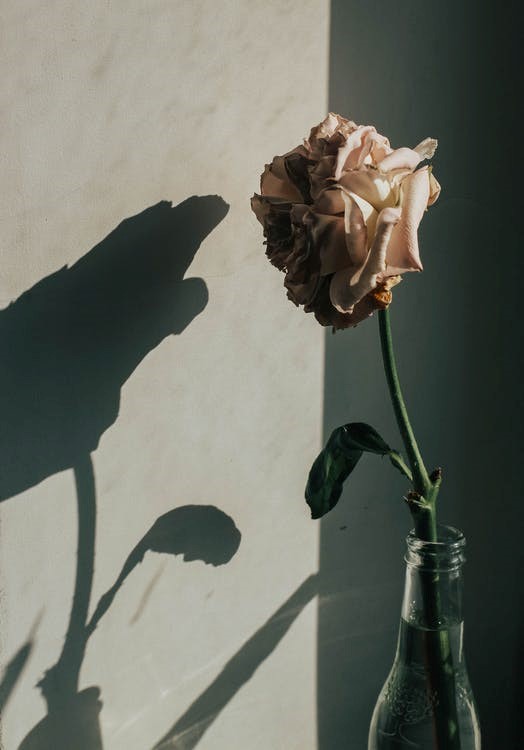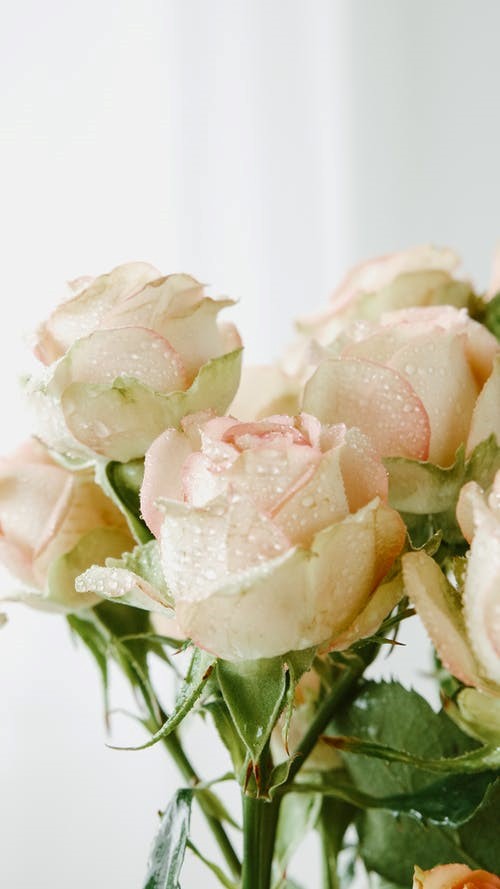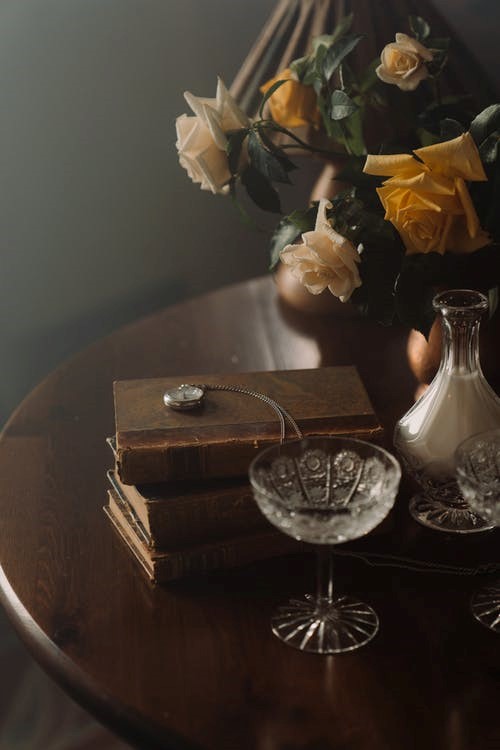
How To Deadhead Roses Like A Pro!
29th Jan 2022
The blog is about how to deadhead roses on garden plants, especially rosebushes. Deadheading rose flowers is easy and yet incredibly crucial for getting maximum benefits.
In a simple summary, deadheading essentially means removing the faded blooms from the plant, letting all the flowers that are new shine through.

Deadheaded roses also improve the look for the next blooming seasons. When faded flower leaves are left behind on the plant, this may hinder flower formation beneath the old flower cluster. Plus, this process makes sure that the flowers are trimmed, which is useful in keeping the plants from growing wild.
What can you do to make sure that your rose plant stays healthy? There's plenty of information out there on the internet about different kinds of gardening in the flowering season, but it's hard to know where to begin when you're not an expert gardener yourself!
That's why I'm here to help you give a step-by-step guide to prune roses and get rid of faded flowers!
What Is Deadheading Roses?
The process of deadheading Roses removes wilted clumps of dying or interwoven flowers. To cut out the shrub roses and the spent bloom, look on the shoots for leaves growing and snip the way you want your future flowers to grow and the finished blooms to look like once you are done.
Next, cut about 1/4 inch over each leaf with pruning scissors. Cut it to 45 degrees, so you prevent fungi and bacteria from forming on the shoots and individual blooms. This also allows for the best absorption of water, making sure your plant stays healthy.
The Best Way To Kill The Spent Roses So That Your Rose Bushes Continue To Bloom!
By removing flower buds or deadheading snips, you can make sure your garden appears neat. This helps boost your plants' energy to grow new blooms. How to kill the spent roses depends on the type of flowers you have growing.

Generally, the most efficient method is to remove the rose from its short stem and any foliage. Remove the old flowering plants to help the plant produce new flower seeds instead.
Some rose plants need deadheading, but others may need more care than simply snipping away old buds. Follow the tips listed below to grow your own varieties.
How To Deadhead Roses?
Deadheading rose flowers is pretty important for getting maximum benefits. Deadheading essentially removes the old blooms and improves the look.
But be warned, this is not a permanent answer but rather a regular process. You should repeat it throughout the different seasons to groom your rose bushes into the perfect plant.
In any case, when faded flower leaves are left behind on the plant, this may hinder flower formation beneath the old flower cluster. Learn about the rose growing and deadheading method for roses in this step-by-step guide.
Deadheads need to be cut whenever it is necessary, and when it starts fading or looks dirty. There are deadheading options for flower groups. The sooner a rose is deadheaded, the sooner new blossom appears. The energy that a rose uses to create hips is used to create a flower.

Deadheading roses is done by removing old and dying flowers from the plant and diverts the energy used previously by those old flowers into producing flowers. Deadheaded Rose bushes will look their best all season. Flower spikes may make plants seem fat and after rain can turn into scum in mud or soil.
This is a potential source of spore infections causing stem dieback. In a few rose varieties, deadheading is vital to maintain the growth and keep it tidy.
Step 1 - Remove All Foliage
Removing all the extraneous leaves from the rose bush can help you to get a better view of the structure of the plant. You can either do this in the spring before the plant breaks its dormancy or remove all the leaves by hand in the other months.
When a multi-floral rose's petals begin to fall off, you must remove it by pulling it with scissors or pulling it up from the centre. This will ensure that the plant looks great despite the other flowers opening. Once the process is complete, the flower should be removed completely.
Step 2 - Cutting Off Horizontal Canes
Removing any canes or branches that are growing horizontally is an important step in pruning a rosebush. This includes anything that is growing in toward the centre of the rosebush or crossing over another cane.
Doing this will also help to increase air circulation and light exposure in the centre of the rosebush, which will aid in improving the overall health of your garden plant.
Once you have removed the flower, use deadheads to remove the flower head and about 15 cm of stem. Cut below the leaf that has a strong, healthy leaf. The next flower grows from the stem.
Step 3 - Pruning Dead Material
The next step is to cut out all canes that are diseased or dead. If you are unsure about the health, check the centre of the cane: if it's brown or black, then the branch is dead, but green means healthy plant material.

Numerous guides can show exactly what to look for when determining if the canes are dead or alive. Still, pruning rambling roses is typically done immediately after flowering. This helps to ensure that the rose bush remains healthy and tidy.
Step 4 - Taking Down The Vertical Canes
When you're pruning your rose bush, it's important to cut the vertical canes down to a height of 18 to 24 inches. Find an outward-facing bud on each cane and prune just above that bud. If you do this, you will promote the continuous blooming of the new flowers.
Step 5 - Cut At A 45-Degree Angle
When cutting the canes, it is important to make sure that the angle of the cut is correct in order to avoid disease and rot and maximize water and mineral circulation.
The American Rose Society said about this: "All cuts should be made at a 45-degree angle that will encourage water to drain away from the bud to help prevent rot and disease. Make sure the cuts are straight and the cut surface is not jagged but smooth. Sharp pruners will help facilitate this."
Did You Know?
Instead of producing one bloom per stem like other species, floribunda and spray roses typically develop clusters of bloom. When you deadhead a flowering rose, you can cut it at least below a whole cluster of roses.
Variety Of Decorative Bowls
Our Roses In Gold Bowl at Saffron's Decor are perfect for any occasion! Real touch roses are arranged in a beautiful and elegant partly gold fishbowl vase with resin water, making it perfect for displaying on your dining table.

These beautiful Roses in Gold Bowl make the perfect addition to any home. The real touch roses look and feel incredibly realistic, making them a perfect gift.
If you are looking for a variety of decorative bowls, do check out Saffron's Decor for the new Luxury Roses In Clear Fishbowl! This beautiful centrepiece is a perfect home decor item. The small glass fishbowl is the perfect size for a console table.
Luxurious Centrepieces
Are you looking for a luxurious centrepiece that will wow your guests? Look no further than Saffron's Decor Real Touch Roses in A Square Vase. Add some faux water to really bring the piece to life, and you'll have a stunning focal point for any occasion - especially since the square shaped vase is a new way to arrange your flowers.

Bring the beauty of fresh roses indoors with these authentic real touch flowers. The soft petals feel natural to the touch, and the Silver Bowl adds a touch of elegance to any decor. These beautiful flowers are sure to impress guests.
Frequently Asked Questions
Do roses re-bloom after deadheading?
Deadheading means removing old flower heads to encourage them to flourish again. While the flowers can bloom in the spring and the summer once deadheads have been removed, they will re-bloom faster when you don't.
The old blossoms usually get taken out or you can get some grooming or sizing done before the deadheading is done.
How do you trim roses to keep them blooming?
Cut up the wood a little before it grows up. Always cut to the stem that points outward to the centre for growth. Start deadheading after flowering and continue through summer to encourage more flowers.
Conclusion
The roses you choose to grow will depend on the type of flowers that suit your garden best. If you're looking for a way to add some colour and life, but also want to maintain an easy-to-maintain garden, consider growing floribunda or spray roses.
They are prone to producing clusters of blooms per stem rather than one bloom per stem like other species - so deadheading is necessary less often. But don't forget about your rambling rose! It needs regular pruning every year after it has flowered in order to encourage new growth.



